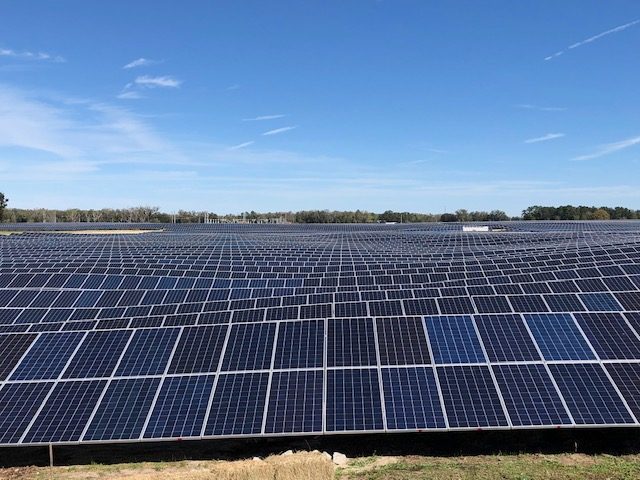As the sun rose on a cool, North Florida morning this past February, FWF President Preston Robertson and I found ourselves standing in what was previously a peanut field. Now it is home to a vast solar array, one of several being constructed by Florida Power and Light (FPL). Located in Columbia County and visible from the I-10/ I-75 interchange, this “solar farm” is a sight many will see as they arrive in Florida from Georgia or travel toward the Panhandle. It serves as a great introduction to visitors, especially if one embraces the fact that Florida, as the Sunshine State, should be fully supporting solar power!


Dubbed the Sunshine Gateway Solar Energy Center, this is one of six such farms already in the works. In fact, another solar farm is planned for a site only a few miles from the one where we were standing. At more than 330,000 individual solar panels, Sunshine Gateway produces enough power to light 15,000 homes. It is part of what FPL envisions as the “30-by-30 Plan” – 30 million solar panels by 2030.
The Florida Wildlife Federation has long been a leading advocate for solar power, both at the commercial level and for individual homeowners.
Solar power is free energy that does not produce greenhouse gases that are warming our planet. Recognizing the need to balance solar installations with wildlife habitats, FWF continues to work to ensure that solar plants are compatible with wildlife needs.
FWF has provided design recommendations at other locations, including fencing that allows wildlife, ranging from the majestic Florida panther to rabbits and opossums, to move freely through their natural range. We hope to combine clean power with habitat and areas that serve as water recharge to our aquifer.
The Federation looks forward to continuing to advocate for the expansion of the use of solar power and the construction of future solar facilities. By engaging with stakeholders early on we can ensure that power production does not come at the expense of wildlife.
Jay Liles, Development Director






